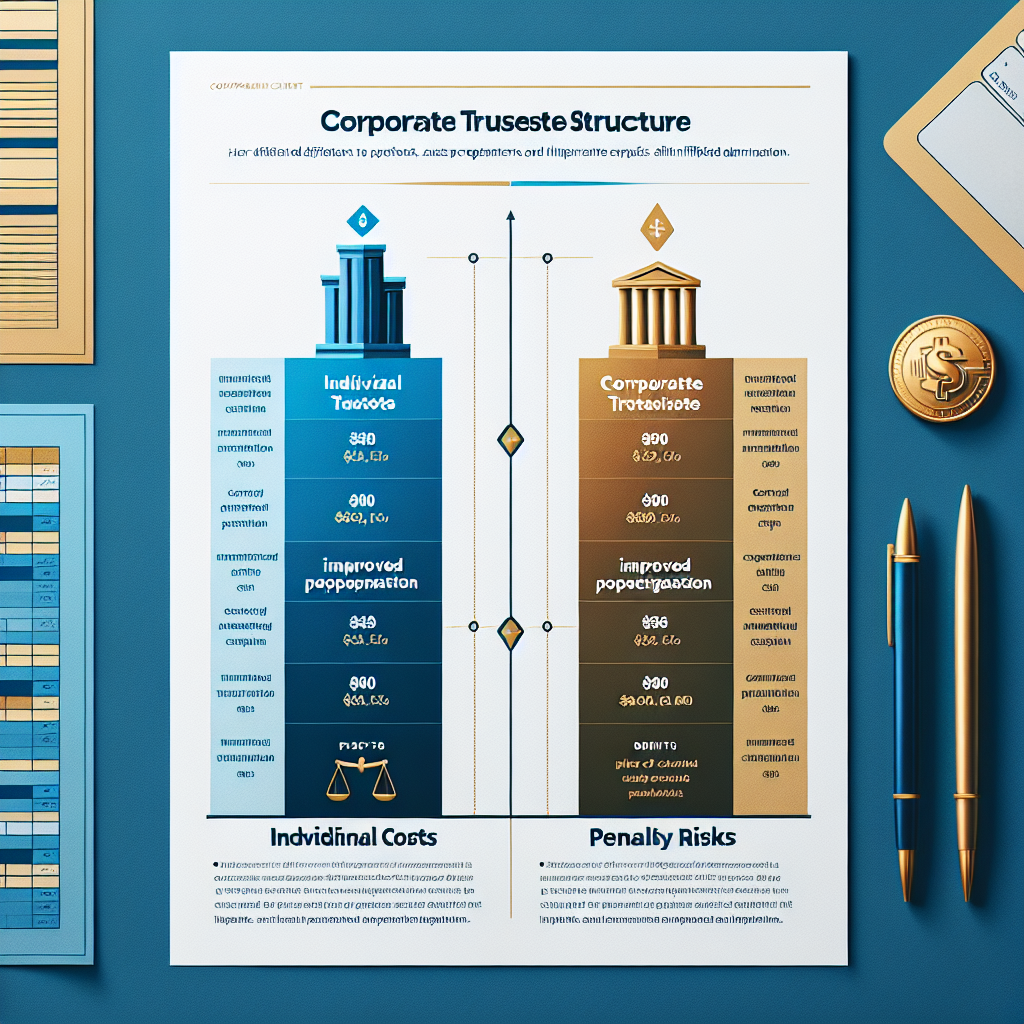Self-Managed Super Funds (SMSFs) have become increasingly popular among Australians looking to take control of their retirement planning. For many property investors and future retirees, the appeal of managing your own superannuation and having the freedom to invest in assets like property makes SMSFs an attractive option. But beneath the surface of this financial opportunity lies a web of costs that, if not properly understood, could seriously impact your retirement dreams.
The popularity of SMSFs isn’t surprising – with over 600,000 funds now operating in Australia, representing more than 1.1 million members. Many Australians are drawn to the control and flexibility these structures offer. However, strategic financial planning becomes absolutely crucial when considering an SMSF setup, particularly understanding the true cost of establishing and maintaining one.
“The biggest mistake new SMSF trustees make is underestimating the total cost of running their fund,” says Jane Smith, a veteran financial advisor. “When people focus only on the headline SMSF establishment fees, they’re often shocked by the ongoing expenses that emerge later.”
The Upfront Costs: More Than Just SMSF Establishment Fees
Setting up an SMSF isn’t as simple as opening a new bank account. The initial SMSF establishment fees can vary significantly depending on your chosen structure and service provider. Typically, you can expect to pay between $1,500 and $3,000 just to get started.
These setup costs generally include:
- Trust deed preparation ($400-$800)
- ABN and TFN registration
- ATO registration
- Initial compliance advice
- Fund establishment documentation
But here’s where the hidden costs begin to emerge. Many prospective SMSF trustees fail to recognize the significant difference in costs between individual trustee structures and corporate trustee arrangements.
With individual trustees (where the SMSF members act as trustees themselves), the initial setup is cheaper. However, with a corporate trustee structure (where a company acts as the trustee), you’ll need to factor in additional company registration fees through ASIC, which can add $500-$800 to your initial SMSF establishment fees.
Ongoing Annual Costs: The Real Budget Drain
The true financial impact of an SMSF becomes clearer when we examine the ongoing annual costs. According to ATO data, the median investment expenses for SMSFs in 2021-22 were $6,831, with average expenses reaching $11,609. These figures highlight that SMSF establishment fees are just the beginning of your financial commitment.
Annual costs typically include:
Administration fees: These range from $990 to $2,490 annually, depending on the service level and provider. Budget providers offer basic compliance services, while premium providers deliver more comprehensive support.
Mandatory audit fees: Every SMSF must undergo an annual independent audit, costing between $500 and $900.
ATO levy: Currently set at $259 per year.
Investment platform fees: If you use an investment platform, expect to pay between 0.15% and 0.66% of your assets under management.
For corporate trustee structures, add the ASIC annual review fee of approximately $50.
These ongoing expenses can significantly impact your retirement nest egg over time. For instance, an SMSF with $500,000 in assets paying $3,000 in annual fees represents a 0.6% drag on performance each year. Over 20 years, this could mean tens of thousands of dollars less in retirement savings.
Sarah and Michael’s experience illustrates this point perfectly. “We were so focused on the SMSF establishment fees that we didn’t properly budget for the ongoing costs,” Sarah admits. “Three years in, we realized we were paying almost $4,500 annually for administration, auditing, and investment advice. That’s money that could have been growing our retirement fund.”
The Variability Factor: Why Costs Differ So Dramatically
One of the most confusing aspects of SMSF costs is their significant variability. While SMSF establishment fees might be somewhat standardized, ongoing expenses can differ dramatically based on several factors:
Complexity of Fund Management
SMSFs with complex investment structures, such as those holding direct property, overseas investments, or private company shares, typically incur higher administration and audit fees. For example, an SMSF with a single investment property can expect to pay $300-$500 more in annual administration fees compared to a fund with only listed shares and cash.
Property investments within SMSFs create additional complexity, particularly when borrowing arrangements are involved. The setup of limited recourse borrowing arrangements (LRBAs) can add $2,000-$3,000 to your initial SMSF establishment fees, plus ongoing costs for SMSF property loan administration.
Additional Professional Services
Many SMSF trustees require additional services beyond basic administration:
- Financial advice: Professional investment advice typically costs between $2,500 and $5,000 annually.
- Tax planning: Strategic tax advice might add $500-$1,500 to your annual expenses.
- Actuarial certificates: Required for funds with members in both accumulation and pension phases, costing $150-$250 each.
“In my experience,” says financial planner Rebecca Chen, “clients who try to minimize costs by handling everything themselves often end up making costly mistakes or missing opportunities that professional advisors would have identified. Sometimes spending more on good advice saves money in the long run.“
Service Provider Quality
The old adage “you get what you pay for” often applies to SMSF services. Budget providers advertising rock-bottom SMSF establishment fees may offer limited support, slower response times, or less personalized service.
Tom’s experience highlights this reality: “We chose the cheapest administrator we could find, paying just $990 annually. But we spent countless hours chasing them for documents, corrections, and answers to basic questions. Eventually, we switched to a provider charging $1,800 but saving us enormous stress and time.”
Budgeting Strategically: Aligning SMSF Costs with Retirement Goals
With a clearer understanding of the true costs involved, how can prospective SMSF trustees ensure these expenses don’t derail their retirement dreams? Strategic financial planning becomes essential.
Assess Your Fund Size First
Industry experts generally suggest that SMSFs become cost-effective when their balance exceeds $200,000-$250,000. Below this threshold, the fixed costs of running an SMSF often make them less economical than retail or industry super funds. Keeping your SMSF simple is key to managing costs effectively.
“I always advise clients to calculate the percentage cost based on their starting balance,” explains financial advisor Michael Wong. “If SMSF establishment fees and annual costs exceed 1-1.5% of your balance, you might want to delay establishing an SMSF until your balance grows larger.”
Budget for Growth in Complexity
Smart trustees plan not just for current costs but anticipate how expenses might grow as their fund evolves. As your SMSF assets diversify or as you transition to retirement phase, additional services and complexity will likely increase your annual expenses.
Lisa, who established her SMSF five years ago, shares: “Initially, our fund held just cash and shares, with annual costs around $2,200. As we added a property and started one member’s pension, our costs increased to $3,800. We should have factored this growth into our long-term planning.”
Compare Service Providers Carefully
When evaluating SMSF establishment fees and ongoing costs, look beyond the headline numbers. Consider:
- Service inclusions and exclusions
- Experience with your intended investment types
- Technology platforms and accessibility
- Communication style and responsiveness
- Client reviews and reputation
“The difference between SMSF providers isn’t just price,” notes industry expert James Patterson. “It’s about the value they deliver for that price and how well they align with your specific needs and investment strategy.”
DIY vs. Professional Support: Finding the Balance
Many trustees try to minimize costs by handling certain aspects themselves. While this can reduce expenses, it’s important to recognize where professional expertise adds value.
Areas where professional support typically provides good value include:
- Compliance and audit requirements
- Tax planning and strategy
- Complex investments like property or international assets
- Estate planning and succession
Conversely, trustees with financial or investment expertise might comfortably handle investment selection or basic record-keeping. Finding the right balance between DIY management and professional support is crucial for long-term success.
Finding the Right Path Forward
Understanding the full spectrum of SMSF establishment fees and ongoing costs is essential for anyone considering this retirement strategy. By recognizing these potential expenses upfront, you can make informed decisions that align with your long-term financial goals.
At Aries Financial, we believe that integrity and transparency around costs is fundamental to successful SMSF management. Our philosophy centers on empowering trustees with honest, comprehensive information about the true costs of SMSF establishment and management.
“Retirement dreams don’t have to be derailed by unexpected SMSF costs,” emphasizes David Chen, SMSF lending specialist at Aries Financial. “With proper planning, realistic budgeting, and the right support partners, an SMSF can still be an excellent vehicle for building wealth and achieving retirement goals.”
The key is approaching SMSF establishment with eyes wide open – understanding not just the initial SMSF establishment fees, but the ongoing commitment required to maintain your fund effectively. By partnering with specialists who prioritize education and transparency, you can navigate these costs while keeping your retirement dreams firmly on track.
As Australia’s trusted SMSF lending specialist, Aries Financial provides the expertise and guidance needed to help you understand the true costs of your SMSF journey. We believe that informed investors make better decisions, and our commitment to integrity means we’ll always provide the full picture – not just the parts that look appealing.
Your retirement deserves nothing less than complete transparency, expert guidance, and strategic financial planning that accounts for all costs – visible and hidden – along the way. Contact our team today to discuss your SMSF establishment options.

